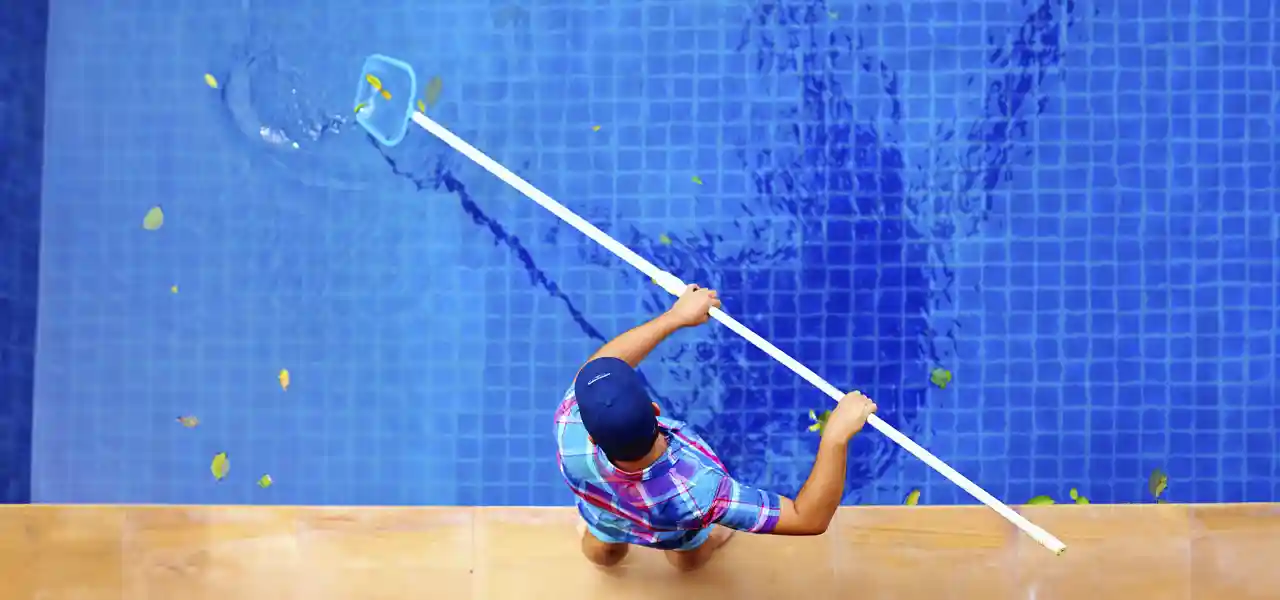FREE Standard Shipping On All Orders $100 or More!*

Maintaining a Pool With Broken or Damaged Equipment
Maintaining a clean and clear pool is essential for every pool owner. However, sometimes unforeseen circumstances like freezing temperatures, power outages, or equipment failure can leave you with damaged pool equipment. When your pool pump or filter is broken, it can seem like a daunting task to keep your pool water in optimal condition. But fear not! In this article, we provide you with expert tips and tricks on how to maintain your pool even with damaged equipment.
A few of the tips for maintaining a pool with damaged equipment explained in this article include:

Remove debris

Add sanitizer

Circulate the water
1. Remove Debris
The first step in maintaining your pool with damaged equipment is to remove any debris that may have accumulated. Whether it's leaves, twigs, or other organic matter, debris can quickly cause staining and surface damage to your pool. Use a skimmer net, robotic pool cleaner, and/or a leaf net to remove the worst of it. If you're dealing with a post-storm cleanup, you may have a significant amount of debris to handle. Be thorough in your cleaning efforts to prevent further complications.
2. Add Sanitizer
Maintaining proper sanitation levels in your pool is crucial for keeping it safe and hygienic. But without a functioning pump, distributing chlorine throughout the pool can be challenging. Thankfully, this is where fast-dissolving chlorine comes in handy! First, test the sanitizer levels in your pool and aim to maintain at least 3.0–4.0 ppm of Free Available Chlorine. Use In The Swim's Instant Liquid Chlorine or Granular Dichlor Chlorine to quickly raise the sanitizer level. These chlorine options will help keep your pool water clean and clear while dealing with damaged pool equipment.
BONUS TIP: While it's essential to maintain sanitizer levels, avoid adding balancing chemicals until your circulation system is back up and running. Adding them before the circulation system is up and running can cause serious damage to pool surfaces. Focus on restoring circulation first, and then address any water balance issues.
3. Prevent Algae Growth
If you have damaged pool equipment, the risk of algae developing in your pool rises drastically, especially during the warm summer months. Without proper circulation, stagnant water becomes an ideal breeding ground for algae. The best way to prevent algae is to stay ahead of it. Adding an algaecide to your pool water can help inhibit algae growth. This non-staining algaecide is ideal for situations where your pool pump is not functioning.
4. Circulate and Agitate the Water
Circulation is a vital component of maintaining a healthy pool. While a functioning pump is the primary means of circulating water, there are alternate methods you can employ when it's not available. If you still have power, consider using a robotic pool cleaner. These cleaners effectively circulate the water as they move around the pool, preventing algae growth and maintaining water clarity. Additionally, the onboard filters of robotic cleaners can help maintain water quality until your damaged pool equipment is operational again.
If you're stuck in a power outage, grab your pool brush and thoroughly scrub all pool surfaces. Doing so not only prevents staining and algae growth, but also agitates the water, aiding in circulation. Additionally, you can use a battery-powered or robotic pool cleaner or leaf net to keep the water moving, even during a power outage.
BONUS TIP: Once your pool's circulation system is functioning again, you can quickly clear any suspended debris by using a flocculant or clarifier.
5. Seek Professional Help
While the above tips can help you maintain your pool with damaged equipment, it's essential to remember that they are temporary solutions. To ensure the long-term health and functionality of your pool, it's best to seek professional help. Contact a reputable pool maintenance company to evaluate the problem and recommend the proper remedy. Their expertise will ensure your damaged pool equipment dilemma is resolved as quickly as possible!
Maintaining your pool with damaged equipment may seem challenging, but with the right strategies, it's entirely manageable. By removing debris, sanitizing the water, preventing algae growth, and promoting circulation, you can keep your pool clean and clear until your equipment is repaired or replaced. Remember, professional help is always available to address any underlying issues and provide expert guidance.